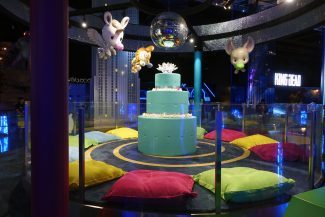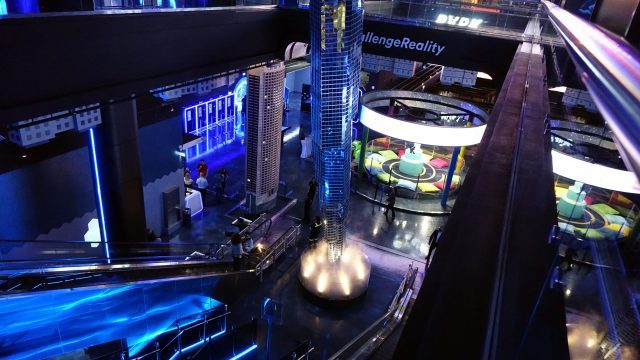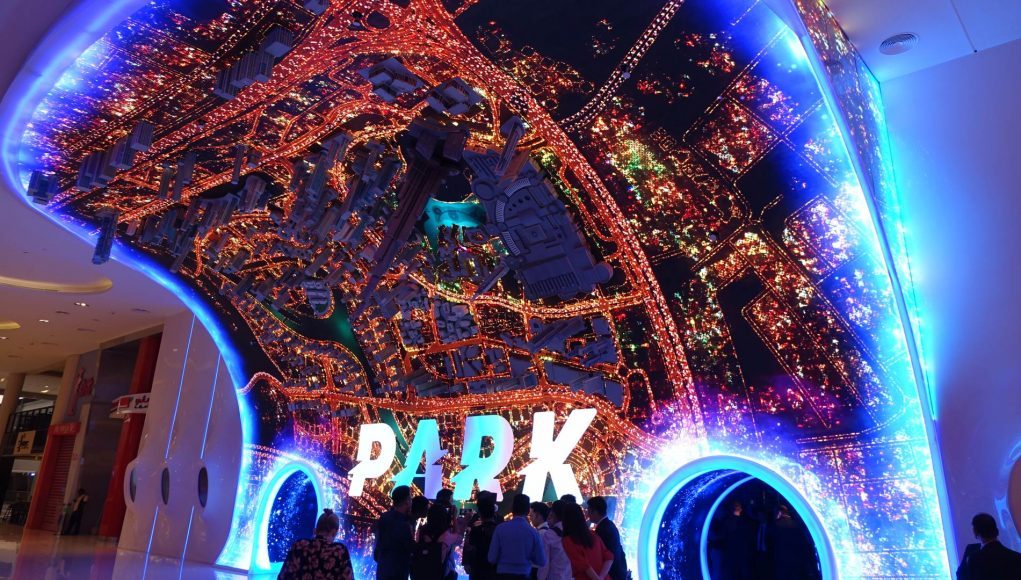A Bright Future for VR Attractions

Discussing the park’s conception with Starbreeze CEO Bo Andersson Klint, he noted how Starbreeze were in a unique position to supply hardware and software content but also engage in many aspects of the design of the physical space.
“[Location-based entertainment] has been our thing since the very beginning,” he said. “We wanted to push our content but also our StarVR headset into that environment first and foremost. The real customer to us is the one with the huge footprint: amusement parks. We identified Emaar to be that partner fairly quickly; they had the same idea for an extravagant, over-the-top ‘new thing’ in the mall. They approached us and we jumped on that, so we sat down with them early in the process to help design the whole park, from the moment you enter to to the moment you exit. It has been a fantastic collaboration that I think is unprecedented so far in the industry. It’s quite a challenge for a games company to evolve into this.”
With regards to StarVR’s roadmap, the development has formed an interesting parallel path between LBE and the even-more-high-end enterprise version. “We’ve delivered the first iteration of the LBE headset here; the enterprise version is still in development,” says Andersson Klint. “We have two parallel tracks, and future generations of LBE headsets will derive from the enterprise space.”
LBE hardware specifications are locked down for now, but improvements such as eye tracking, which is being tested in the enterprise headset, should find its way to the LBE version in due course.
“If you say to (the novice user) ‘you will have eye tracking’, they will have no clue,” says Starbreeze CTO Emmanuel Marquez. “In the B2B space it’s easy; you talk to tech people and they understand the benefits. In LBE, it should be a fully transparent feature, that might enable more presence through higher quality rendering or better eye contact with other human avatars.”

I asked Andersson Klint where he sees LBE offerings heading in the next few years. “We’ve come from idea to this in five years,” he says. “If we continue here with this as a flagship (park), I think what you will see is larger-scale experiences like 10 or 20 people interacting in the same volume or even having 50 people playing against each other. Also more experiences that are tactile, where you use the environment as you play, and still somewhere around a 10 minute format. From a headset perspective, there is a lot of talk about AR, but VR will evolve just as fast.” “We are going to cut the cable within five years,” notes Marquez. “We’ll be lighter, higher resolution, and wireless.”
Starbreeze believes LBE VR technology will continue to remain relevant even when consumer hardware improves, as it can always offer something bigger and better.
“When do you invite 20 of your friends into your living room to have a pirate battle?” muses Andersson Klint. “This entertainment format is a given, it’s already here in theme parks and sports arenas, it’s just that gaming hasn’t really adapted yet.”
He believes the VR Park Dubai project is doing the VR industry a “big favour” in using the accessibility and familiarity of a theme park setting to introduce VR to a wider audience. While generic ‘VR arcade’ venues (offering consumer-grade hardware and experiences in a pay-to-play setting) will continue to grow, the theme park approach is the more exciting one.
“You’re smiling from the moment to step through the door; it’s not just the VR, it’s the whole presentation. I think this is much better,” he says. “A little more costly (to build), but this place you’ll have for years and years. And the beautiful thing about our digital content is that we can keep updating and tweaking it.”
Disclosure: Along with other press, Starbreeze covered airfare and lodging for Road to VR to attending VR Park’s opening press event.







